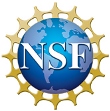Technical program
| April, 22nd |
Pasteur Amphitheater |
Lounge |
Lunch area |
Outside |
| 08:10 – 08:20 |
David Guiraud, Nigel Lovell
|
|
|
|
| 08:20 – 09 :30 |
|
Poster session/coffee break |
| 09:30 – 11:00 |
Oral session |
Poster session |
|
| 11:00 – 11:45 |
Plenary: Hugues Duffau |
|
|
|
| 11:45 – 12:45 |
|
|
Lunch |
|
| 12:45 – 13:30 |
Plenary: Warren M. Grill
|
|
|
|
| 13:30 – 15:00 |
Invited session: Visual prosthetics* |
Poster session |
|
| 15:00 – 16:00 |
|
Poster session/coffee break |
| 16:00 – 17:30 |
Symposium: BCI
|
|
|
19:00 – 23:00
|
Gala Dinner – Grant Ceremony
|
|
|
| April, 23rd |
Pasteur Amphitheater |
Lounge |
Lunch area |
Outside |
| 08:00 – 09 :30 |
Symposium: BMI control of FES |
|
|
| 09:30 – 10 :00 |
|
Coffee break |
|
| 10 :00 – 11:30 |
Oral session |
|
|
|
| 11:30 – 12:15 |
Plenary: Karlheinz Meier |
|
|
|
| 12:15 – 13:15 |
Poster
|
Session
|
Lunch |
|
| 13:15 – 14:45 |
Oral Session |
Poster session |
|
| 14:45 – 15:15 |
|
Poster session/coffee break |
| 15:15 – 16:15 |
Invited Session: Organic Electronics
|
|
|
|
| 16:30 – 18:00 |
Symposium: Autonomic visceral modulation
|
|
|
|
|
|
|
|
|
|
|
|
|
|
| April, 24th |
Pasteur Amphitheater |
Lounge |
Lunch area |
Outside |
| 08:00 – 09:30 |
|
Poster session/coffee break |
| 09:30 – 11:00 |
Oral session |
Poster session |
|
| 11:00 – 11:45 |
Plenary: John Rogers |
|
|
|
| 11:45 – 12:45 |
|
|
Lunch |
|
| 12:45 – 14:15 |
Invited session: Neurophotonics* |
Poster session |
|
| 14:15 – 15:15 |
|
Poster session/coffee break |
| 15:15 – 16:45 |
Symposium: Neuromodulation for epilepsy |
|
|
| 16:45 – 17:00 |
David Guiraud, Nigel Lovell
|
|
|
|
*Neurophotonics
Rapidly emerging optical and genetic approaches are changing our understanding of how information is coded by the brain. Assuming that they can be implemented safely, these approaches show great promise in clinical neurophysiology, enabling devices that can communicate with specific cell types in the nervous system. This invited session will focus on new genetic and optical technologies that allow interaction with large numbers of individual cells in real time.
Chairpersons: J. A. White, S. Shoham
*Visual prosthetics
The last few years has seen dramatic improvement in the field of artificial vision. For example, both Second Sight (USA) and Retina Implant (Germany) received regulatory approval to begin sales of their retinal prosthetic devices. During this same period, two additional companies, Pixium (France) and Bionic Vision (Australia), have begun clinical trials with their new devices as well. Despite this progress however, considerable challenges – especially in the ability to elicit high quality vision consistently. The session proposed here will focus on recent progress as well as on strategies to overcome existing challenges. Speakers from Second Sight, Retina Implant and Bionic Vision Australia have all committed to giving a talk. In addition, Frank Lane, from Illinois Institute of Technology has confirmed as well. Frank has been interviewing the users of the original Dobelle implant; his findings are fascinating and directly relevant to this effort. Thus representatives from all major clinical efforts will be represented.
Chairpersons : Shelley Fried, Gaëlle Lissorgues
*Soft and organic bioelectronics
A visible trend over the past few years involves the application of organic electronic devices to neural interface devices. Organic devices offer several distinct advantages compared to incumbent technologies, including mechanical flexibility, tunability of their structure via chemical synthesis, enhanced biocompatibility, and capability of drug delivery. Most importantly, high ionic mobilities in organic semiconductors enable new modes of interfacing between neurons and electronics. As such, organics promise to yield new tools for neuroscience and enhance our understanding on how the brain works. This invited session includes invited talks from experts who will showcase the different research directions in this exciting field.
Chairpersons: George Malliaras, Stéphanie Lacour
Permanent link to this article: https://neuro.embs.org/2015/programs/technical-programs/




















